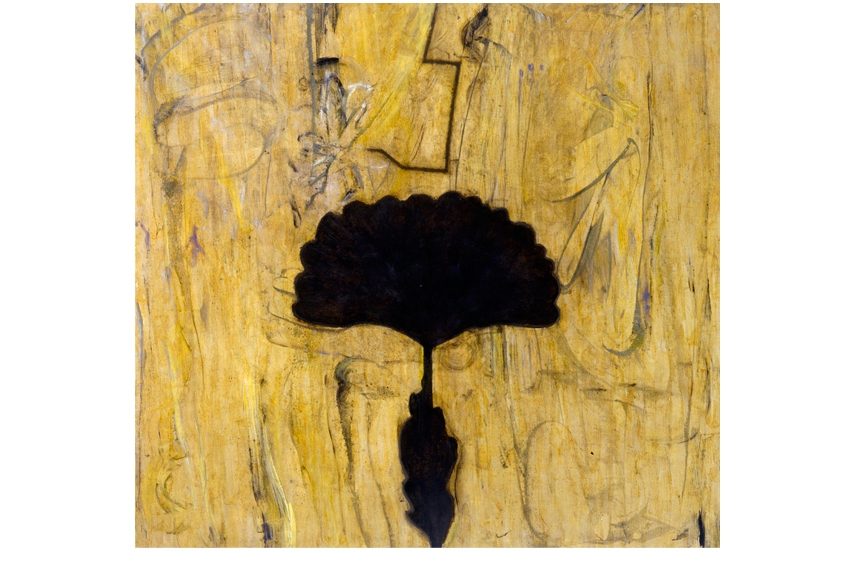Prunella Clough was a modest and self-effacing artist who nevertheless produced some of the most consistently original and innovative British art of the second half of the 20th century. She was by no means reclusive, enjoying an extensive social and teaching life, but she deliberately kept a low profile, being famously guarded with biographical details. So much so, that a couple of young artists I knew in the mid-1980s were convinced that Clough was already dead, though she continued to paint and exhibit sporadically until her death in 1999.
How refreshing this is in an age of seemingly unbounded artistic egos, when relentless self-obsession has to make up for lack of real creativity. By contrast, Clough’s paintings, drawings and prints continue to resonate in the mind and to offer fresh beguilement to the eye.
Frances Spalding has written the first book on Clough, a convincing combination of art history, criticism and biography. Spalding is best known as a biographer, whose lives of Vanessa Bell, Duncan Grant and most recently John and Myfanwy Piper, have won her much acclaim. In this new book she brings her biographical skills to bear upon the elusive Clough, sensitively illuminating the life in order to elucidate the work.
She does this without trespassing too far upon Clough’s essential privacy, while giving the reader enough of context and human interest to keep avidly reading. Spalding understands the period, and the vagaries of the art world, and writes with considerable perception and elegance about Clough’s singular achievement. Her book is a marvel of compression and lucidity, a welcome introduction but also a scholarly interpretation, and a fitting tribute to a remarkable artist.
Cara Prunella Clough-Taylor was born in Knightsbridge on 14 November 1919, the only child of wealthy parents. Her father, Eric, was a civil servant in the Department of Overseas Trade, who wrote serious poetry as well as light verse. Her mother, the Hon. Thora Zelma Grace Gray, was an Anglo-Irish aristocrat. Thora’s younger sister, and thus Prunella Clough’s aunt, was the distinguished designer and architect Eileen Gray. Largely self-taught, Clough briefly attended Chelsea School of Art, and then worked during the war as a graphic designer, drawing charts and maps. Her early work shows signs of surrealism and wartime neo-romanticism, before seeking out something more individual.
She grew to relish a tough semi-industrial environment, beginning with the Suffolk fishing industry and then moving on to cranes and lorries, which she depicted with a combination of urban realism and semi-cubist formalism. Later she painted electrical installations, gates, horizons. The figure soon disappeared from her imagery, but she became expert at recording man’s trace and implied presence. She painted subjects that were often overlooked and unacknowledged — the personal parallel is inescapable here — such as a cheap plastic carrier bag, a twist of wire, forgotten toys or a stack of buckets. Her restlessness would take her all over the country, mostly by car, in search of anything that might spark an image.
Clough, who denied that she’d ever painted an abstract painting, stated: ‘I see my subject mainly as landscape.’ Although she avoided all publicity and refused whenever possible to be interviewed, she could be revealing about her art. For instance, she said she aimed at ‘saying a small thing edgily’, which is a brilliant summary of her work. She liked grey days and half-light, or dusk, developing a tonal, almost monochromatic palette of what she herself called ‘sludgy colours’. In later life, after two cataract operations, her palette notably brightened, and incorporated some striking and unusual combinations.
When I knew her she was in her seventies, and dressed unobtrusively, often wearing polo-neck sweaters and brown cords, though still radiating a faded stylishness and odd elegance, however superficially shabby. (Someone rather cruelly described her once as looking like a dusty old carpet.) I was one of the judges of the 1999 Jerwood Prize for Painting, which we awarded to Clough for a lifetime’s achievement. She was mortally ill at the time, instantly gave away the £30,000 prize money and was embarrassed by the fuss, but it signified a degree of public recognition she thoroughly deserved.
After her father’s early death, she looked after her mother first and then her aunt, both of whom lived to be over 90. In addition, Clough helped to organise and manage Eileen Gray’s artistic estate. Loyal and generous with her time, she was personally thrifty and preferred to give her wealth away discreetly to charities, art schools or friends in need.
Clough was fluid in her sexuality, enjoying close relationships with both men and women, but she did not find intimacy easy. Important figures in her life were nearly all artists and range from the cosmopolitan German Jew Heinz Henghes, to David Carr, scion of a wealthy Quaker family (his father was chairman of Peek Frean), to John Berger, the enamellist Robin Banks, Keith Vaughan and the film-maker Peter Adam. Friends included architects as well as painters, and Jim Cadbury-Brown commented of Clough that ‘she was always a difficult person to interpret’. This book helps.






Comments